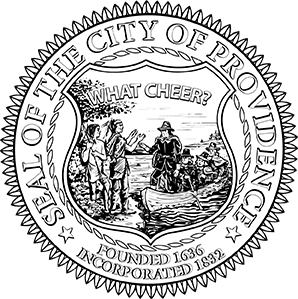The Providence Urban Wildlife Conservation Partnership is a collaboration between the U.S. Fish and Wildlife Service, the RI National Wildlife Refuge Complex, the City of Providence Parks Department, and the Partnership for Providence. Together, this partnership strives to bring a conservation message to the neighborhoods of Providence in the places where families live, work, and play.
Established through a collaborative agreement in 2013, this Urban Partnership was one of the first six designated nationwide through the US Fish and Wildlife Service’s Urban Refuge Initiative. With 80% of Americans living in cities, the initiative aims to meet children and families in their own neighborhoods to nurture an appreciation of wildlife conservation and foster a better understanding of the role of the U.S. Fish and Wildlife Service in conserving natural resources. Currently the Providence Urban Wildlife Conservation Partnership works with a variety of partners, including Park Friends Groups, schools, teachers, local non-profits, conservation and environmental education-focused organizations, and, most importantly, families and communities in Providence!
The Providence Urban Wildlife Conservation Partnership focuses on exploring nature found in our city in city parks, within neighborhoods, and right outside our residents’ schools and doorsteps. This includes assisting in facilitating walking field trips in the neighborhoods, public programs in city parks, professional development opportunities for formal and informal educators to help connect their students to nature in urban areas, and summer camp programs for Providence youth.
The Providence Urban Wildlife Conservation Partnership also helped to establish Providence as an Urban Bird Treaty City through the national Migratory Bird Program; committing to create bird-friendly environments and provide people, especially in historically excluded, diverse communities, with opportunities to connect with nature through bird-related activities.
- To learn more about the nationwide Urban Wildlife Refuge Partnership programs, including the Standards of Excellence that guides our program, please visit: https://www.fws.gov/urban/
- Follow the Providence Urban Wildlife Conservation Partnership on Facebook at: https://www.facebook.com/urbanwildliferefuge
- To learn more about the Urban Bird Treaty program, visit: https://www.fws.gov/birds/grants/urban-bird-treaty.php
- To contact Conservation Program Coordinator, April Alix, please email: aalix@providenceri.gov or call 401-680-7253
Providence Urban Wildlife Conservation Partnership Events
Join us for our Annual Freshwater Fishing Event in Roger Williams Park on June 26th from 3:30PM – 5:30PM. Learn how to fish in the freshwater ponds of Roger Williams Park alongside fishing experts. All equipment will be provided. This event is FREE and open to the public. See registration form for more details: https://forms.gle/zdswFSzsbXCh9PQaA
Unirse con nosotros a Pesca de Agua Dulce en El Parque Roger Williams el 26 de junio, 3:30pm-5:30pm. Aprenda a pescar en los estanques de agua dulce del parque Roger Williams junto a expertos en pesca. Todo el equipo será disponible. El evento es GRATIS y abierto para todo el público. Consulte el formulario de registro para obtener más detalles: https://forms.gle/zdswFSzsbXCh9PQaA
Facebook: www.facebook.com/urbanwildliferefuge
Instagram: @riurbanrefuge

